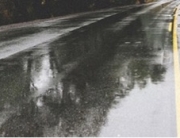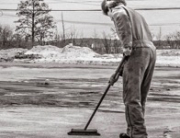The sun can play havoc on your asphalt pavement. Asphalt suffers similar damage just like how the skin is damaged by prolonging exposure to UVA and UVB rays. There are numbers of ways to protect asphalt, but the first thing is properly done asphalt mixture. If the quality of the asphalt is good, then the breakdown would be slow.
Types of Sealants
Using sealants is the most effective way to protect pavements from the damaging rays of the sun. Some types of sealants that can help restore asphalt are:
- Basic seal coat: this sealant should be applied annually just before the start of summer. This sealant contains antioxidants that help protect the asphalt from water damage. It also prevents raveling of the asphalt from small pebbles pitting the surface. This process helps to slow the aging and degradation of asphalt. Basic seal coating is cost effective and best suited for home purposes.
- Microsurfacing: This high-quality mix has a higher content of polymers and aggregates than other types of sealants. It also last longer than the popular slurry sealant. One major advantage of micro surfacing is that vehicles can start driving on the surface in about one hour after the work is one.
- Tire Rubber Modified Surface Sealer (TRMSS): this is used mostly for heavily used areas such as streets and airport runways. The TRMSS process replaces oils in the asphalt.
- Slurry seal: used on areas where heavy-duty vehicles such as trucks frequent, this seals fills in cracks and smooth out uneven surfaces.
Line stripping is also necessary if you want to maintain the look of your pavement even when the temperature soars. Over time with exposure to the elements, the lines in parking areas and paint on curb walls will crack and fade. Using paints that can withstand UV rays is important. You also need to repaint every five or so years to maintain the sharpness of painted lines and cubs.
Some common signs of sun damage on asphalt are:
- Cracking: it will dry out asphalt which will lead to cracks developing on the surface
- Melting/warping: excess heat can cause asphalt to become warp and uneven. When temperatures get extreme, the asphalt may even start melting.
- Breakdown due to oxidation: elemental damage breaks down the flexible liquid asphalt that holds the aggregate together. Cracks form and water is allowed to penetrate, further damaging the asphalt.
Asphalt Maintenance in Chicago
Once you notice your asphalt pavement is beginning to show its age, call us. The sooner you take steps to prevent sun damage to your asphalt pavement the better.










